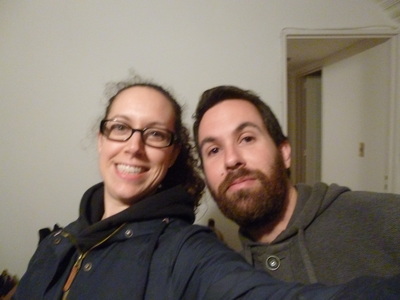
Hola! This website is the result of many years spent being fascinated by tango violin! It has become a passion as well as a job and I love spending time discovering new playing techniques, musicians, recordings, stories...the list is endless. After winning a Winston Churchill Fellowship to go to Buenos Aires for 2 months to write a book about tango violin I realized 2 months was not enough and that it is a project that will take many years. So this website is the summary of what I have discovered so far and of who I have met on that musical journey! You will find biographies, photos, video links, interviews and later I hope to include CDs, mp3s and sheet music. Some of these musicians regularly tour the world and give classes and others are only to be found here in the tango clubs and milongas of Buenos Aires. I don't have time to keep an update of all the tango concerts that happen but any special events or workshops will be posted here. I hope to create an international community of violinists interested in this amazing music so any questions or comments are welcome.
|
|
7 Reasons to Learn Tango Violin
1 - Learn percussive techniques you didn't know existed for violin! Due to the lack of real percussion instruments in tango several instrumental techniques have been developed which replicate the sounds of drums and other percussive instruments. These techniques are called chicharra, tambor, latigo, strapata, arrastre, plus many more 2 - Tango Groove Tango music has a different groove and swing from all other styles of music. It has rhythms called sincopas, which contain an enormous variety of different syncopations and articulations – they are one of the key things to learning the tango groove. If you listen to the orchestra of Osvaldo Pugliese you start to get a sense of what that groove is. 3 - Un-classical Glissandos In tango, the use of the glissando is part of the expressive language. Some of the most famous tango violinists, like Fernando Suarez Paz, use more then 12 different kinds of glissando in a single phrase. You can be really creative with this and there are no hard and fast rules. All the kinds of glissandos your classical violin teachers told you not to do are allowed here! 4 - Articulation A large part of what makes tango tango is the way you articulate the notes. Tango musicans are very precise about this and have a special short and percussive marcato played right at the heel that imitates the sound of the bandoneon. The opposite is long, triplet phrased legatos and a form of rubato, called fraseo, which literally dances around the beat, pushing forward and pulling back. This kind of phrasing is very important in tango melodies. Piazzolla was a master of this. |
5 - Emotion
The single most important element of great tango playing is to play with 110% emotion. If you don’t engage yourself fully with your message and music, the tangueros (people who love tango) will feel it and be left cold. This music represents so much to the people of Argentina and those who dance tango that you will be snubbed if you play half-heartedly. As tango musicians used to say to me, don’t bother stepping out on that stage if you’re not prepared to give everything you have. You must speak from your heart. 6 - Freedom Although tango does have some stylistic rules, it is popular music and therefore there is always a creative space for you to contribute your own ideas. The solos you get in tangos are a moment in which you have to find your voice – you can add all kinds of things from classical type cadenzas to jazz licks from Stephane Grappelli or other violin masters – if you know the history of the style and how to play that, then you can add anything you like to create your own voice. 7 - The Score is only a Guide One thing tango shares with jazz is that the written music score is simply a guide. Lots of things are never written down as tango has a vast aural history. This is one of the reasons that tango style is not well known. You have to listen intensively to understand all the different styles and techniques. There are over 50 different orchestras you need to identify before saying you know what tango is all about. It would be the same as saying there is only one classical composer….. |





